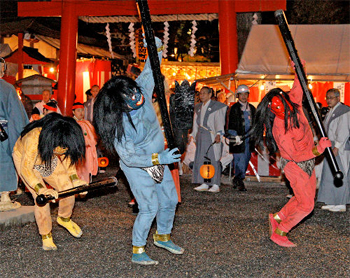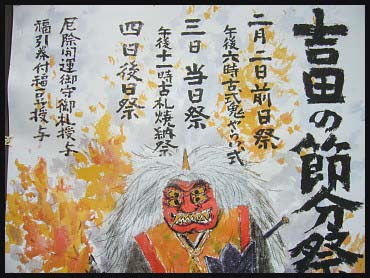https://gokurakuparadies.blogspot.jp/2015/06/jigoku-e-paintings-of-hell.html
..............................................................................................................................................
Shamon jigoku zôshi 沙門地獄草紙 Scrolls of the Hells for Buddhist Novices
Shamon Jigoku - a hell for monks

CLICK for more photos !
- quote -
Monk-in-Hell Scroll (Hell of boiling excrement)
This is the fifth volume of Jigoku Zoshi (picture scroll depicting hell) with seven volumes in total, which had been handed down to the Masudas. The Jigoku Zoshi owned by the former Masudas had long been handed down as a set of Jigoku Zoshi and Hekija-e (a painting that depicts a scene of evil being punished and exterminated) (National treasure; owned by the Nara National Museum).
It has been known that the set depicts the Shamon Jigoku (a hell for monks), which is explained in the Batorasetsu Sutra contained in the Butsumyo Sutra comprising 16 volumes and this drawing corresponds to the Fusshi Jigoku in the Shamon Jigoku. The Jigokuhen Gobyobu, a folding screen on which hell was drawn and which was used at the Butsumyo-e Service that had been practiced at Court since the early Heian period, depicts the Shamon Jigoku. Since it is possible that the Hekija Deity (deity that expels evil) was also drawn on this folding screen, some believe that the Jigoku Zoshi of the former Masudas, including this one and Hekija-e originally constituted one picture scroll that was created based on the design of the Jigoku Gobyobu.
While this drawing displays the traditional techniques of Yamato-e in the Heian period as exemplified by the handwriting in the style of Jakuren school in the legend and the careful sketches and shading in character drawing, it also shows characteristics of a transitional period to the Kamakura period, such as the line drawing of Mezurasetsu (servants in hell) represented in the extremely fat or thin bodies. It can be said, therefore, that this was created during the period from the end of the Heian period to the early Kamakura period.
- source : emuseum.jp/detail -
- reference : shamon jigoku zoshi -
..............................................................................................................................................
. information of facebook .
naraku ならく / 奈落 hell, hades - sanskrit : naraka, niraya - Naraka
. Juu Oo 十王, Juo, Ju-O - 10 Ten Kings of Hell - Ten Yama Kings .
..............................................................................................................................................
..............................................................................................................................................
Shamon jigoku zôshi 沙門地獄草紙 Scrolls of the Hells for Buddhist Novices
Shamon Jigoku - a hell for monks

CLICK for more photos !
- quote -
Monk-in-Hell Scroll (Hell of boiling excrement)
This is the fifth volume of Jigoku Zoshi (picture scroll depicting hell) with seven volumes in total, which had been handed down to the Masudas. The Jigoku Zoshi owned by the former Masudas had long been handed down as a set of Jigoku Zoshi and Hekija-e (a painting that depicts a scene of evil being punished and exterminated) (National treasure; owned by the Nara National Museum).
It has been known that the set depicts the Shamon Jigoku (a hell for monks), which is explained in the Batorasetsu Sutra contained in the Butsumyo Sutra comprising 16 volumes and this drawing corresponds to the Fusshi Jigoku in the Shamon Jigoku. The Jigokuhen Gobyobu, a folding screen on which hell was drawn and which was used at the Butsumyo-e Service that had been practiced at Court since the early Heian period, depicts the Shamon Jigoku. Since it is possible that the Hekija Deity (deity that expels evil) was also drawn on this folding screen, some believe that the Jigoku Zoshi of the former Masudas, including this one and Hekija-e originally constituted one picture scroll that was created based on the design of the Jigoku Gobyobu.
While this drawing displays the traditional techniques of Yamato-e in the Heian period as exemplified by the handwriting in the style of Jakuren school in the legend and the careful sketches and shading in character drawing, it also shows characteristics of a transitional period to the Kamakura period, such as the line drawing of Mezurasetsu (servants in hell) represented in the extremely fat or thin bodies. It can be said, therefore, that this was created during the period from the end of the Heian period to the early Kamakura period.
- source : emuseum.jp/detail -
- reference : shamon jigoku zoshi -
..............................................................................................................................................
. information of facebook .
naraku ならく / 奈落 hell, hades - sanskrit : naraka, niraya - Naraka
. Juu Oo 十王, Juo, Ju-O - 10 Ten Kings of Hell - Ten Yama Kings .
..............................................................................................................................................














































